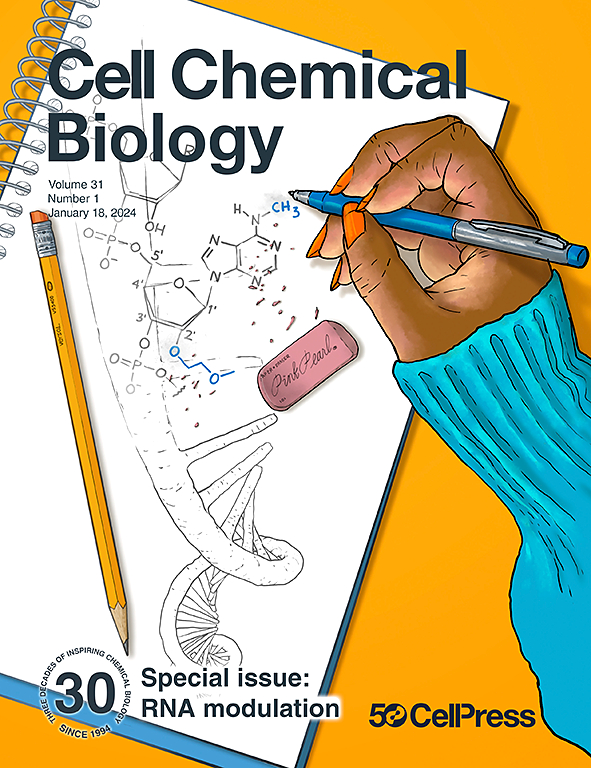Covalent targeting of splicing in T cells
IF 7.2
1区 生物学
Q1 BIOCHEMISTRY & MOLECULAR BIOLOGY
引用次数: 0
Abstract
Despite significant interest in therapeutic targeting of splicing, few chemical probes are available for the proteins involved in splicing. Here, we show that elaborated stereoisomeric acrylamide EV96 and its analogues lead to a selective T cell state-dependent loss of interleukin 2-inducible T cell kinase (ITK) by targeting one of the core splicing factors SF3B1. Mechanistic investigations suggest that the state-dependency stems from a combination of differential protein turnover rates and extensive ITK mRNA alternative splicing. We further introduce the most comprehensive list to date of proteins involved in splicing and leverage cysteine- and protein-directed activity-based protein profiling with electrophilic scout fragments to demonstrate covalent ligandability for many classes of splicing factors and splicing regulators in T cells. Taken together, our findings show how chemical perturbation of splicing can lead to immune state-dependent changes in protein expression and provide evidence for the broad potential to target splicing factors with covalent chemistry.


T 细胞剪接的共价靶向作用
尽管人们对剪接的靶向治疗非常感兴趣,但很少有化学探针可用于参与剪接的蛋白质。在这里,我们展示了精心制作的立体异构体丙烯酰胺 EV96 及其类似物通过靶向核心剪接因子之一 SF3B1,导致白细胞介素 2 诱导型 T 细胞激酶(ITK)的选择性 T 细胞状态依赖性缺失。 机制研究表明,状态依赖性源于不同的蛋白质周转率和广泛的 ITK mRNA 交替剪接。我们进一步介绍了迄今为止最全面的参与剪接的蛋白质列表,并利用半胱氨酸和蛋白质定向活性的蛋白质剖析以及亲电侦察片段证明了 T 细胞中许多种类的剪接因子和剪接调节因子的共价配体性。总之,我们的研究结果表明了剪接的化学扰动如何导致蛋白质表达的免疫状态依赖性变化,并为利用共价化学作用靶向剪接因子的广泛潜力提供了证据。
本文章由计算机程序翻译,如有差异,请以英文原文为准。
求助全文
约1分钟内获得全文
求助全文
来源期刊

Cell Chemical Biology
Biochemistry, Genetics and Molecular Biology-Molecular Medicine
CiteScore
14.70
自引率
2.30%
发文量
143
期刊介绍:
Cell Chemical Biology, a Cell Press journal established in 1994 as Chemistry & Biology, focuses on publishing crucial advances in chemical biology research with broad appeal to our diverse community, spanning basic scientists to clinicians. Pioneering investigations at the chemistry-biology interface, the journal fosters collaboration between these disciplines. We encourage submissions providing significant conceptual advancements of broad interest across chemical, biological, clinical, and related fields. Particularly sought are articles utilizing chemical tools to perturb, visualize, and measure biological systems, offering unique insights into molecular mechanisms, disease biology, and therapeutics.
 求助内容:
求助内容: 应助结果提醒方式:
应助结果提醒方式:


